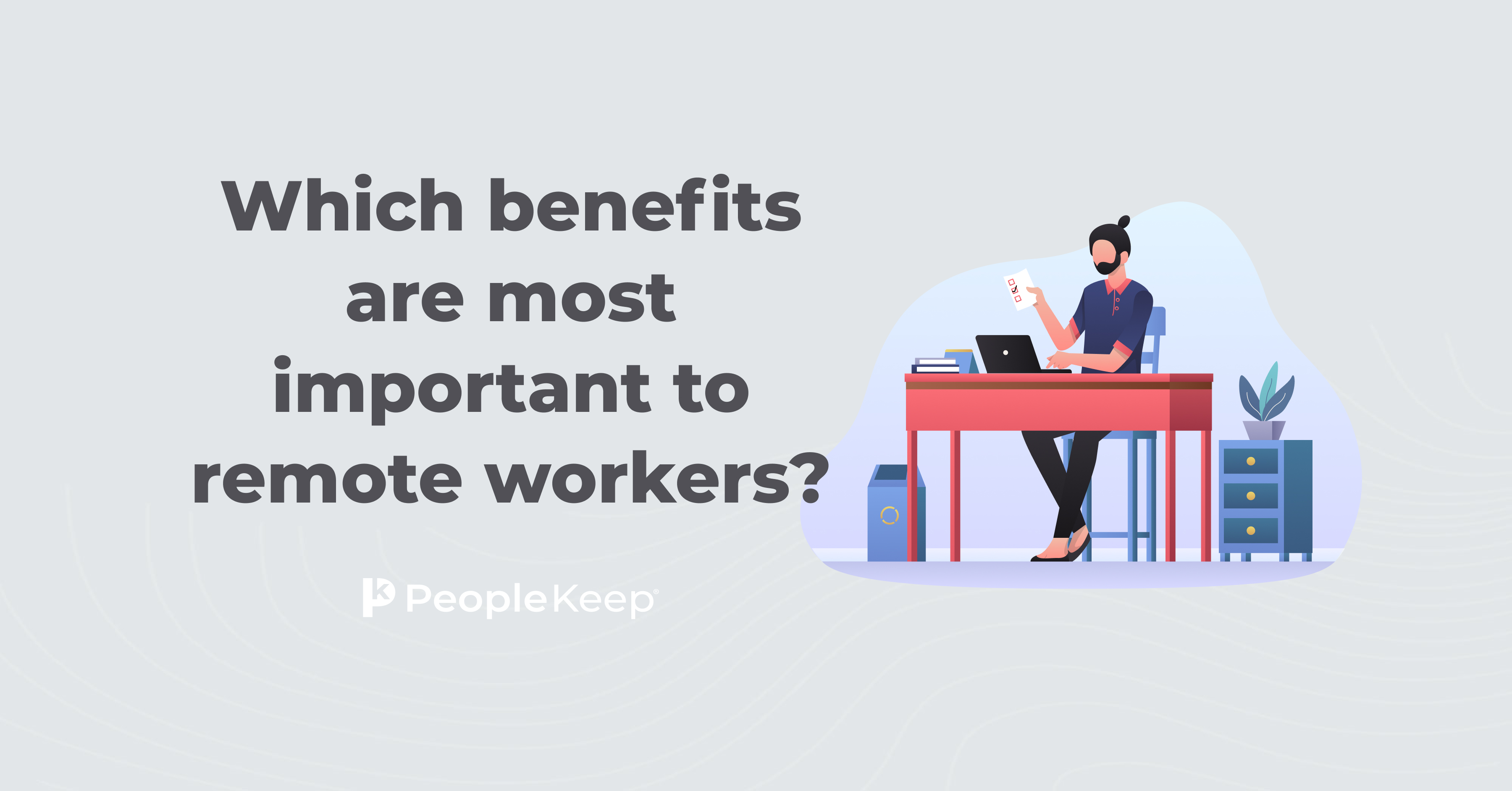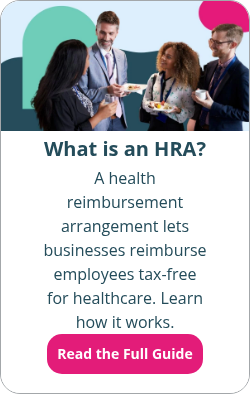Why you want a vendor-agnostic provider for employee benefits
By Chase Charaba on September 14, 2023 at 7:17 AM
When it comes to recruiting and retaining your employees, you need a competitive employee benefits package. But there's more to creating a standout compensation package than adding additional perks.
It's essential to select the right benefits for your employees. Some benefits are more appealing to job seekers, while others help you address the growing needs of your current employees without adding unnecessary complexity.
When choosing which benefits to offer your employees, you'll want to consider flexible benefits from a vendor-neutral provider that's not tied down by contractual obligations.
In this article, we'll explain what vendor-neutral benefits are, why you want a vendor-agnostic platform for your employee benefits, and how flexible benefits are advantageous for you and your employees.
What does vendor-agnostic mean?
A vendor-agnostic or vendor-neutral employee benefits solution doesn't rely on a partner vendor list. A vendor-neutral benefits platform works with any third-party system provided by different vendors your organization uses.
Instead of being required to use your funds or benefits at a single vendor that’s compatible with your benefits plan, your employees can use their benefits for qualifying expenses at any vendor of their choice.
For example, many group health insurance plans require policyholders to use specific pharmacies for their prescriptions to receive coverage. However, your employees could fill their prescriptions at any pharmacy with a vendor-agnostic health benefits solution.
Why do vendor-agnostic benefits matter to employees?
Traditional benefits are often restrictive for employees by limiting where they can use their benefit allowances and benefit cards.
The major benefits of vendor-neutral platforms are freedom and choice. Employees can choose vendors and how to spend their benefit allowance, card balance, or get reimbursed. Instead of purchasing eligible items or services from a preferred vendor list, they can go wherever is most convenient for them.
For services like employee gym memberships, employees can go to any gym they want using their benefits instead of a specific gym that your organization partners with for your wellness programs.
This is especially helpful when your employees live in different areas, as your current vendors may not be available near their homes.
Additionally, vendor-neutral providers generally don't have control over the individual benefits you're offering to your employees, allowing you to customize them so that they work with your organization.
With a vendor-agnostic approach to benefits, your employees aren't tethered to a set company vendor list. This gives them more flexibility and control over how they use their benefits.
Why flexible benefits are important for employers
Offering a range of benefits is an attractive solution for your business in many ways. Our 2022 Employee Benefits Survey Report found that 82% of employees say that the benefits package an employer offers is an important factor in whether or not they accept a job.
A flexible benefits package helps your organization attract and retain top talent by improving the employee experience and making your job description stand out.
When you increase employee satisfaction, you create a company culture where your employees enjoy coming to work and being a part of a collaborative team. Your employees will be more productive and engaged in the workplace, enabling you to reach your business goals while reducing employee turnover.
Common types of flexible, vendor-neutral benefits
Personalized benefits are a comprehensive solution to providing flexible, vendor-agnostic perks to your employees. We'll cover a few of the top fringe benefits you can provide in the sections below.
Health benefits
Health benefits are an essential part of any benefits plan. However, traditional group health insurance plans often don't provide the flexibility your employees need. Thankfully, there are alternatives to group health coverage, such as cafeteria plans, health stipends, and health reimbursement arrangements (HRAs).
An HRA is a formal health benefit that enables you to reimburse your employees for their qualifying medical expenses tax-free. Simply set monthly or annual allowances for your employees and approve their eligible expenses for reimbursement.
Three of the most popular HRAs are the:
- Qualified small employer HRA (QSEHRA)
- Individual coverage HRA (ICHRA)
- Group coverage HRA (GCHRA), also called an integrated HRA
With a QSEHRA or ICHRA, you can reimburse employees for the qualifying expenses that matter most to them, such as individual health insurance premiums, vision benefits, dental insurance premiums, and out-of-pocket medical expenses. With a GCHRA, you can supplement your existing group health insurance policy to help employees pay for out-of-pocket expenses.
HRAs are vendor-agnostic solutions because they allow your employees to choose the health insurance plans, services, and products that work best for them. However, your employees must have individual insurance that meets minimum essential coverage (MEC) under an ICHRA, and they must participate in a group health insurance policy to be eligible for a GCHRA.
A health stipend is another option for giving employees a monthly allowance for healthcare. But, since employee stipends are taxable, they don't satisfy the Affordable Care Act’s employer mandate for organizations with 50 or more full-time equivalent employees (FTEs).
Wellness programs
Employee well-being programs are becoming increasingly common in the workplace as employers seek to address and improve holistic well-being. But, not all employee wellness plans are equal in design.
Many employers outsource their wellness programs and lifestyle benefits to third-party vendors. While this is a basic solution to improving employee well-being, the vendor may not be an agnostic company and, therefore, wouldn't allow for the flexibility your employees need.
A wellness stipend is an excellent addition to any wellness plan. With a stipend, you can give employees an allowance for their wellness expenses. This can include gym memberships, fitness and yoga class fees, home exercise equipment, mobile wellness apps, fitness trackers, and more.
This enables your employees to practice well-being at home in their preferred way, regardless of what gyms they decide to attend or which brand of equipment they purchase.
Other flexible employee benefits
Many other flexible employee benefits are available that allow you to better serve your employees' needs.
Additional vendor-agnostic benefits include:
- Commuter benefits
- Childcare benefits
- Meal allowances
- Education assistance
- Professional development opportunities
- Allowing employees to work a flexible schedule (known as flex time)
- Unlimited paid time off (PTO)
- Health savings accounts (HSAs)
- Flexible spending accounts (FSAs)
Conclusion
To get optimal performance out of your benefits package, don't tie your employees to a single vendor's suite of products. You should consider a vendor-agnostic solution that gives your employees the greatest flexibility over where they can use their benefits.
Establishing a flexible benefits program is another way to ensure that all your employees can benefit from your perks while giving them the freedom to use their benefits the way they want.
If you're looking to offer flexible benefits to your employees, PeopleKeep can help. As a vendor-agnostic partner, we make it easy to offer HRAs that your staff can use regardless of where they incurred their eligible expenses.
This article was originally published on June 22, 2022. It was last updated on September 14, 2023.
Check out more resources
See these related articles

Examples of common small business employee benefits
Just because your organization is small doesn't mean you can't offer quality benefits. Here are some examples of common benefits that employees love.

Which benefits are most important to remote workers?
In this article, we'll discuss which benefits are most important to remote workers and why you should include them in your employee benefits package.

Why you should offer small business employee benefits
Discover why offering employee benefits is essential for small businesses. Learn how benefits can boost retention, productivity, and growth.



